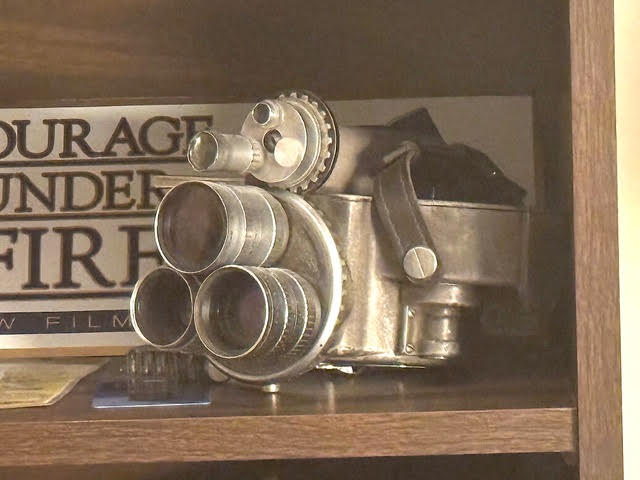Here are some additional WBIR AM-FM “artifacts” from almost 60 years ago. Going thru the old files brought back memories of a different time, an easier world, and - most importantly - working with and learning from talented people. It’s history worth remembering. (Stole that line from YouTube’s "The History Guy.")
BJ’s artwork was really good. The images' reality and humor spared no one, not even himself. Nor his boss.
Bill was attending UT and occasionally arrived in the nick of time, especially after a dreaded evening class. Since I went on duty at 0430, BJ knew I would get things rolling at 0457:30 with the National Anthem and SignOn carts. And while he was pulling his record albums from the album cabinet, I would at 0500 do a 4:30 rip’n-read local news. It was mostly off of the clattering UPI teletype (remember them?) along with key articles lifted from the morning's Knoxville Journal.
In the 1960s and early 1970s, Knoxville’s two daily newspapers were part of an important regional media communications landscape that included several vibrant radio news operations. During my early morning treks to 1513, I’d often collect a free Knoxville Journal City Final edition from the paper’s loading dock on State Street. The dock was under the building which held both the Journal and News-Sentinel offices. In the loading dock at 0400, Circulations Department managers, who all smelled like ink, were loading up thousands of newspapers into cars and trucks driven by scores of local route carriers.
Many bundles of papers also went to the L&N and Southern railroad depots and to the Greyhound and Trailways bus stations. Passenger trains and local busses would spread the Journal (and the evening News-Sentinel) all over east Tennessee, southeastern Kentucky, and even into southwestern Virginia. All of Knoxville's media — print and broadcast — was a big regional deal back then. Technology has seen to it that this busy scene will never be repeated.
Anyway, after the news and a dash of sports, I’d play the just-recorded forecast from the U.S. Weather Bureau office (then located at TYS airport). By then, Bill was ready to slip into the air chair. Cool, calm, collected. And as always, polished on the air.
Below is BJ's highly accurate depiction of one of his 4:59:30 AM arrivals. And a cartoon of one of my alleged radio interview events is not too far off the mark.
Doc Johnston had an easy upbeat banter that made his Date with Doc program a ratings winner. But he had a habit of emphasizing the time, a lot, especially when "his train of thought got uncoupled.” BJ took note of this piece of Doc’s broadcast style in another cartoon.
The 1968 RTNDA windshield card helped considerably when hitting multiple assignments. AND it had "special value" in UT’s expansive Area 9 staff lot.
When I hit WATE-TV in 1971, there was no real emphasis on feeding TV news reporting to WATE-AM Radio 620. So the Uher tape recorder went into storage. Have no clue what happened to the rig.
I do still have my old “beat-all-to-Heck” Bell & Howell 16mm camera from Channel 6. It was a gift of WATE’s great Chief Engineer Donnie Watkins. It today resides at eye level, on an office shelf. As I approach 76, good memories come back whenever I look at the old camera. If it could talk or write. The yellowing brittle memo paper on which Bill Jenkins’ enshrined his wonderful artwork now requires careful handling. BJ did not realize he was recording history. We should all be so lucky to have had a Bill Jenkins in our lives.





